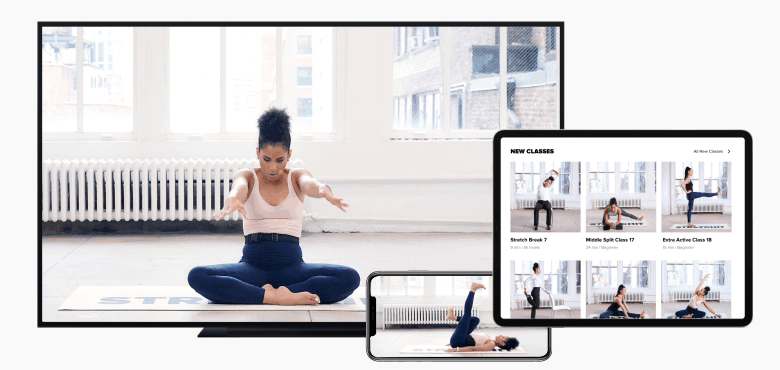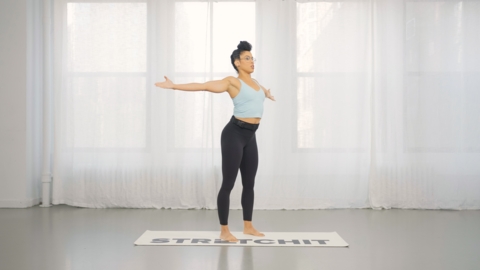Training Tips For Beginners
Stretch safely and feel good!
As a beginner, you may have a lot of questions on how to approach your stretching practice and make it safe and efficient. We've all been there, and we know how you feel. Here are a few beginner tips so you can go after your goals confidently and successfully.

Take It Slow
Don't rush your training and don't expect to see results right away. Modify the poses you are not ready for. Use yoga blocks and a strap. Don't feel bad if you don't look like the trainer in the STRETCHIT videos. Be kind to yourself and don't try to push it past what's available to you. You shouldn't feel pain during your stretching training - keep the discomfort level around 5 out of 10.
Listen to Your Body
Remember that you are stretching to feel good, not to punish yourself. If you feel completely incapacitated after doing a class or if you've done a couple of days in a row and you're so sore you can't move, then you’re probably training too much. Back off a little bit. Don't go so intensely into each stretch. Spread out your training day so that you have more time to recover.
Recovery is important. Just like any kind of intense activity, you tear down the muscles so that they rebuild stronger and more flexible. You need to give time for your body to repair itself to avoid injuries, body exhaustion, and overtraining. Feeling a little sore after training is ok, but you don't want to feel like you can't move the next day.

Focus on Your Form
Listen for anatomy and alignment cues. Training in front of a mirror can be beneficial. You can even take a video of yourself so that you can see exactly where your body is in terms of alignment. As you start stretching it’s crucial that you build that foundation of proper form. Proper form is going to prevent injuries.
Pay attention to where exactly your body is supposed to be and what muscles need to be engaged to maintain specific shapes. This is going to set you up for success in the future. As you advance, as poses get more difficult, form is going to be even more critical to prevent injuries and keep you stretching the correct muscles.
Get Out of Positions Slowly
As a beginner, you might panic and be tempted to bail out of a position. We encourage you not to do this. Listen to your body while you're in the stretch. Ease into every shape, continue to breathe while you're in it and then ease out. If at any point you're in a position and you can't breathe, or you have a quick breath pattern - you've gone too far. In those situations, ease out slowly and gently. Try to maintain the stretch but reduce its intensity. Ease on the stretch, find your full breath and come out of it before you get to that point of panic and bail.

Maintain a Healthy Lifestyle
Drink a lot of water - that's going to flush your muscles, give them the nutrients that they need. Eat well. Make sure you're taking care of your body on the whole, holistically, and you will see how that impacts your training for the better.
Be Compassionate with Yourself
And last but not least, be compassionate with yourself. We all have goals, and we train because we want to reach those goals but don't forget to acknowledge yourself for the little victories along the way. Don't be afraid that you're not progressing. Don't beat yourself up because you didn't get to where you wanted to get at a certain time. You're here, and you're doing the work, and that's the most important thing. Go for it! We’re really proud of you. Keep it up!





